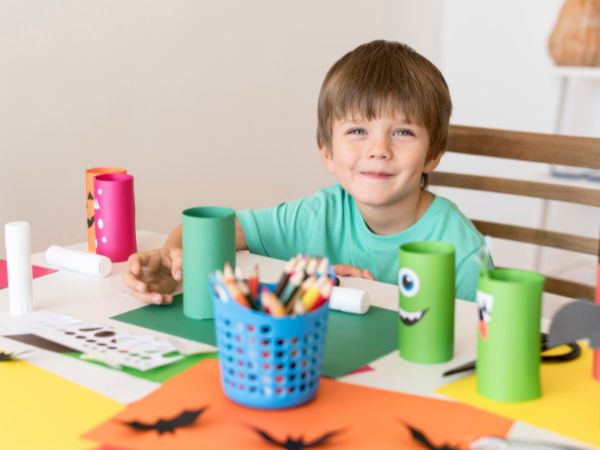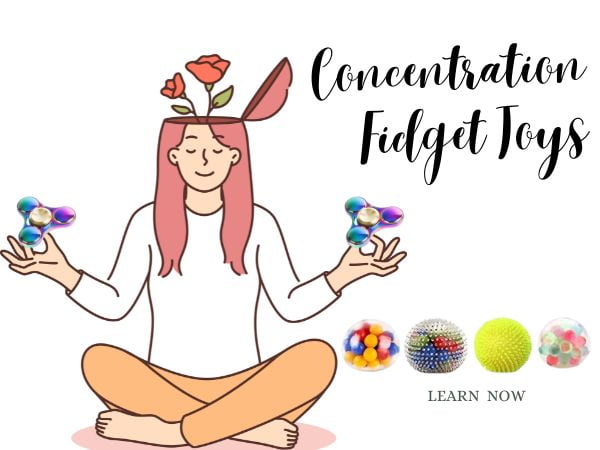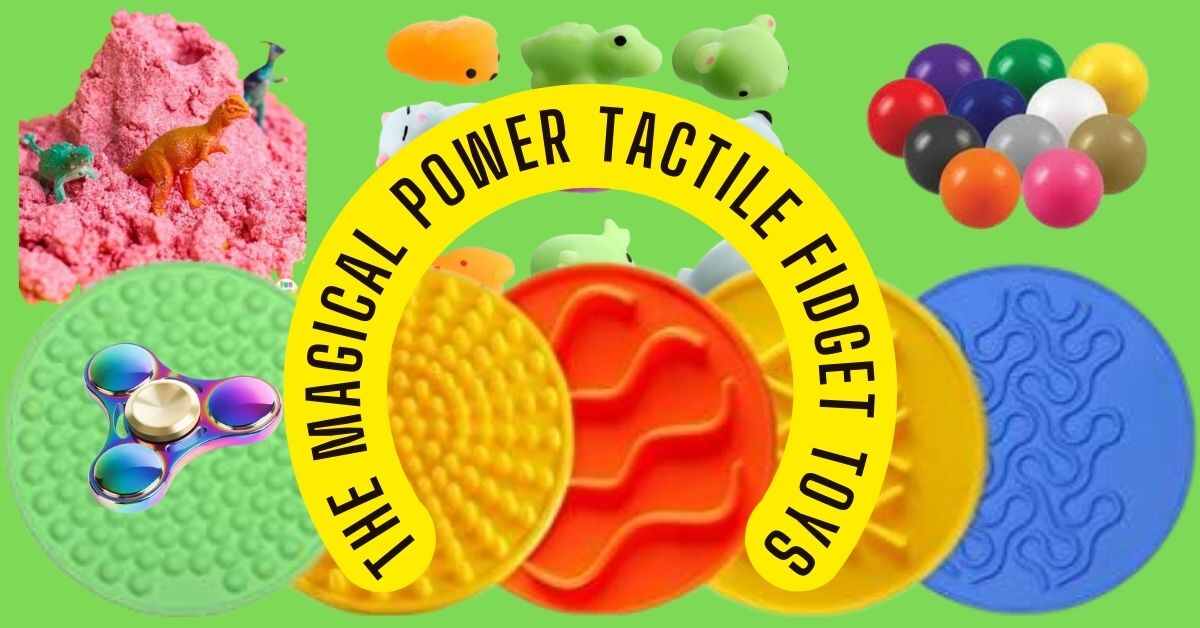I. Introduction
Many people are investigating the practice of meditation in today’s hectic environment as a means of achieving inner calm and mental health. People from many walks of life are beginning to practice meditation more frequently due to its many advantages, which include improved focus and stress reduction. However, some people may find it difficult to stay focused and engaged when using traditional meditation methods. Here’s where the idea of meditation fidget toys comes in, providing a fresh way to improve the meditative experience.
“Fidget toys are not just for restless minds; they are keys to unlocking deeper levels of mindfulness and tranquillity.” – Zenith Zenith
Table of Contents
II. Understanding Meditation Fidget Toys
Fidget toys for meditation are clever, yet basic, devices that help users focus and engage their senses as they meditate, leading to a higher state of awareness. These toys come in a variety of shapes and sizes, each providing a different tactile experience, such as cubes, spinners, beads, and more.
Fidget toys have historical roots since comparable devices were utilized by people from many cultures to aid in relaxation and focus during meditation sessions. These instruments have developed over time to satisfy the requirements of contemporary practitioners, adding functional and design components to increase their efficacy.
III. Benefits of Using Fidget Toys in Meditation
Incorporating fidget toys into meditation practice can offer several benefits, enhancing focus, stress relief, and relaxation. Here’s a breakdown:

- Improved Focus: The physical release of restless energy that fidget toys facilitates the mind’s easier transition into a focused state during meditation. Squeezing a stress ball or tracing a textured object are two examples of repetitive motions or tactile sensations that people might use to focus their attention away from distractions and into the present moment.
- Stress Relief: Playing with fidget toys can be a calming sensory experience that helps reduce stress and anxiety. Certain toys can induce serenity and reduce tension in the body and mind with their soothing materials or rhythmic movements. Those who have trouble with rushing thoughts or overwhelming feelings during meditation may find this to be especially helpful.
- Relaxation: Using gentle movement and attention, fidget toys can be an effective technique for fostering calm. In order to promote a deeper sense of comfort and relaxation, people can benefit from engaging in activities like spinning a spinner ring or working with a worry stone. Meditation can be more successful when the mind is at ease, just as the body is.
Personal anecdotes and case studies further illustrate the positive effects of incorporating fidget toys into meditation:
- Personal Experience: Although the author finds meditation difficult, she believes that keeping focused and grounded is aided by fidget toys like smooth stones or strings of beads. By keeping the mind anchored in the here and now, the repetitive motion facilitates deep relaxation and the release of distractions.
- Case Study: Fidget toys were reported to decrease perceived tension and promote relaxation in a study including novice meditation practitioners as compared to individuals who did not use them. The toys’ tactile stimulation encouraged concentration and involvement, which resulted in a more fruitful and satisfying meditation session.
IV. How to Use Fidget Toys for Meditation
Incorporating fidget toys into meditation sessions can enhance your practice and deepen your mindfulness experience. Here are some techniques for using fidget toys effectively:

- Breathing Exercises with Fidget Toys: To encourage calm and concentration, combine breathing techniques with fidget toys. Take a stress ball or a smooth stone, for instance, and time your breaths to the toy’s light squeezes or rotations. Squeeze or rotate the toy lightly as you inhale, then release the tension as you exhale. This rhythmic motion might help you relax and bring your consciousness back to the here and now.
- Visualization Techniques: Get more out of your visualization exercises by combining fidget toys with meditation. A textured cube or a labyrinth puzzle are two examples of fidget toys with patterns or textures that appeal to you. Put your hands over the texture or imagine yourself using your fingers to make your way through the labyrinth. In order to enter a more profound state of relaxation and awareness, pay attention to the motions and sensations.
- Mindful Movement: Use fidget toys to introduce focused movement into your meditation sessions. Select toys that need to be played with gently and repeatedly, such as fidget spinners or spinner rings. Holding the toy in your hand, take a comfortable seat or stand. Observe your body’s tiny changes and the sensations of movement as you interact with the toy. With every movement, maintain your present-moment awareness and permit yourself to lose yourself in the moment, distraction-free.
- Body Scan Meditation: To foster physical awareness and encourage calm, pair a body scan meditation with fidget toys. Take a few long breaths to center yourself before reaching for a fidget toy. Subsequently, begin at your head or toes and carefully move your attention throughout your body, noting any points of stress or pain. Apply the fidget toy to release tension as you feel it by squeezing, rubbing, or rotating it. With the fidget toy as a tool to help you relax and become more present, continue working through each area of your body.
- Gratitude Meditation: With the help of fidget toys, engage in gratitude meditation to develop a sense of appreciation and well-being. Pick a comforting or enjoyable fidget toy for yourself, such as a textured gratitude diary or a worry stone. With the toy in your hand, think of anything for which you are thankful, allowing yourself to lose yourself completely in the experience of thankfulness. To strengthen your connection to the present moment and to serve as a tangible reminder of the feelings and emotions that come with thankfulness, use the fidget toy.
Using these strategies, you can incorporate fidget toys into your meditation sessions to improve your focus, calm yourself more deeply, and develop a stronger sense of mindfulness and presence in your practice.
V. Creating a Meditation Space
Creating a meditation space that incorporates fidget toys can enhance your practice by providing a calming and supportive environment. Here are some tips for setting up a conducive meditation space and incorporating fidget toys into the design:

- Choose a Quiet and Comfortable Location: Select a quiet and peaceful area in your home where you can practice meditation without distractions. Ideally, choose a space with natural light and good ventilation to create a sense of openness and tranquility.
- Declutter and Simplify: Clear away clutter and unnecessary items from your meditation space to create a clean and serene environment. Keep the space simple and uncluttered to minimize distractions and promote a sense of calmness.
- Incorporate Soft Lighting: Use soft, diffused lighting in your meditation space to create a soothing ambiance. Consider using candles, string lights, or Himalayan salt lamps to add warmth and softness to your environment.
- Add Comfortable Seating: Choose comfortable seating options such as a meditation cushion, yoga mat, or padded chair to support your body during meditation. Ensure that the seating is ergonomic and conducive to maintaining a relaxed and upright posture.
- Integrate Fidget Toys: Incorporate fidget toys into your meditation space to provide tactile stimulation and promote focus and relaxation. Display a selection of fidget toys such as stress balls, textured objects, or kinetic sand in a designated area within reach.
- Create a Personal Altar or Sacred Space: Designate a corner or area of your meditation space for a personal altar or sacred objects that hold significance for you. Arrange items such as candles, incense, crystals, or meaningful artifacts to create a focal point for your practice and infuse the space with intention and meaning.
- Include Natural Elements: Bring elements of nature into your meditation space to foster a deeper connection with the natural world. Consider adding plants, flowers, or natural materials such as wood or stone to evoke a sense of grounding and tranquility.
- Minimize Distractions: Take steps to minimize external distractions in your meditation space, such as turning off electronic devices, silencing notifications, and closing doors or windows to reduce noise from outside. Create a sanctuary where you can fully immerse yourself in the present moment and cultivate inner peace.
- Personalize Your Space: Infuse your meditation space with elements that reflect your personal preferences and spiritual beliefs. Add meaningful artwork, inspirational quotes, or symbols that resonate with you to create a space that feels authentic and supportive of your meditation practice.
VI. Types of Meditation Fidget Toys
These toys typically incorporate sensory elements like texture, movement, or sound to engage the senses and provide a point of concentration. Here are a few examples of meditation fidget toys:

- Fidget Spinners: These are small devices with a bearing in the center that allows them to spin. Users can hold them between their fingers and spin them, providing a soothing sensation.
- Fidget Cubes: These are small cubes with various features on each side, such as buttons, switches, and dials. Users can manipulate these features with their fingers to help focus their attention and relieve stress.
- Worry Stones: These are smooth, polished stones that people can rub between their fingers to help reduce anxiety and promote relaxation.
- Tangle Toys: These are interconnected curved sections that can be twisted and turned into various shapes. They provide tactile stimulation and can help keep hands busy during meditation.
- Koosh Balls: These are soft, rubbery balls covered in strands of rubber. Users can squeeze and manipulate the strands, providing sensory input and promoting relaxation.
- Sensory Rings: These are flexible rings with textured surfaces that users can roll between their fingers to help calm their minds and improve focus.
- Acupressure Rings: These are small metal rings with raised bumps on the inside. Users can roll them up and down their fingers, stimulating acupressure points and promoting relaxation.
- Liquid Motion Toys: These are handheld toys filled with liquid glitter or other colorful materials. Users can tilt and shake them to create soothing visual effects.
- Breathing Balls: Also known as Hoberman spheres, these are collapsible balls that expand and contract with a gentle pull and push. They can be used as a focal point for breathing exercises during meditation.
- Zen Gardens: These miniature gardens typically consist of a shallow tray filled with sand or gravel and small stones or other objects. Users can rake the sand or arrange the stones to create patterns, promoting a sense of calm and mindfulness.
VII. Safety Precautions for Fidget Toys:
- Supervision for Children: Ensure that young children are supervised while using fidget toys, especially those with small parts that could pose a choking hazard.
- Inspect Regularly: Regularly inspect fidget toys for any signs of wear and tear, such as loose parts or broken pieces.
- Age-Appropriate Toys: Choose fidget toys that are age-appropriate for the user.
- Avoid Hazardous Materials: Be cautious of fidget toys made from materials that could be harmful if ingested, such as small magnets or toxic substances.
- Proper Storage: Store fidget toys safely away from young children and pets when not in use. Sensory kits for kids….
VIII. DIY Fidget Toys for Meditation :
- Sensory Bottles: Fill a plastic bottle with water, glitter, and small objects like beads or buttons. Seal the bottle tightly and shake it to create a soothing sensory experience.
- Homemade Stress Balls: Fill balloons with flour, rice, or lentils to create simple stress balls. Alternatively, use a mixture of cornstarch and water for a squishy texture.
- Fabric Marble Maze: Sew a fabric maze with pockets and pathways, then insert marbles or beads inside. Users can navigate the maze with their fingers, promoting focus and relaxation.
- DIY Tangle Toy: Use bendable wire or pipe cleaners to create your own tangle toy. Twist and shape the wire into various patterns and designs to provide tactile stimulation.
- Rock Painting: Collect smooth rocks and paint them with soothing designs or patterns. Users can hold and rub the painted rocks during meditation for a calming sensation.
- Homemade Zen Garden: Use a shallow tray or dish filled with sand or salt, and arrange small stones or shells on the surface. Users can rake the sand and arrange the objects to create patterns and promote mindfulness.
- Paper Fidgets: Fold and manipulate paper into various shapes such as origami or paper fortune tellers. These simple paper crafts can provide tactile stimulation and keep hands busy during meditation.
- DIY Squishy Balls: Fill balloons with flour, cornstarch, or playdough to create squishy stress balls. Customize the size and texture to suit individual preferences.
When making DIY fidget toys, ensure that materials are safe and non-toxic, and follow any specific instructions or precautions.
IX. Scientific Research Supporting Fidget Toys in Meditation:
Research on the efficacy of fidget toys in meditation and stress relief is still evolving, but some studies suggest their potential benefits:
- Stress Reduction: A study published in the Journal of Occupational Therapy in Mental Health found that using fidget toys during stressful situations can help reduce anxiety and promote relaxation. Participants reported feeling calmer and more focused after using fidget toys during meditation sessions.
- Improving Focus: Research published in the Journal of Attention Disorders suggests that fidgeting may help improve focus and attention in individuals with attention deficit hyperactivity disorder (ADHD). Fidgeting with tactile objects like fidget toys may provide sensory stimulation that enhances cognitive performance and concentration.
- Mindfulness Enhancement: Preliminary studies on mindfulness-based interventions indicate that incorporating tactile stimuli, such as fidget toys, into meditation practices may deepen mindfulness experiences. These findings suggest that fidget toys can serve as useful tools for promoting mindfulness and present-moment awareness.
- Stress Management: Studies examining the use of fidget toys in workplace settings have shown promising results in stress management and productivity improvement. By providing a non-disruptive outlet for nervous energy, fidget toys may help individuals manage stress more effectively and maintain focus on meditation or work tasks.
X. Choosing the Right Fidget Toy for Your Meditation Practice:
When selecting a fidget toy for meditation, consider the following factors to ensure it aligns with your preferences and goals:
- Material: Choose a fidget toy made from materials that feel comfortable and soothing to touch. Options include smooth plastics, soft rubber, or natural materials like wood or stone.
- Size: Consider the size of the fidget toy and how it fits comfortably in your hand. Some users may prefer smaller, pocket-sized toys for discreet meditation sessions, while others may enjoy larger toys that provide more tactile feedback.
- Texture: Pay attention to the texture of the fidget toy’s surface. Some people may prefer smooth textures for gentle stimulation, while others may prefer textured surfaces for more sensory input.
- Sensory Features: Evaluate the sensory features of the fidget toy, such as buttons, switches, or movable parts. Choose a toy with features that appeal to your senses and provide the right level of stimulation for your meditation practice.
- Personal Preferences: Ultimately, the best fidget toy for meditation is one that resonates with your personal preferences and meditation goals. Experiment with different types of fidget toys to find the one that enhances your mindfulness practice and promotes relaxation.
XI. Techniques for Incorporating Fidget Toys into Meditation Sessions:
- Set an Intention: Start your meditation session by setting an intention for how you’d like to use the fidget toy. Whether it’s to promote relaxation, enhance focus, or deepen mindfulness, clarifying your goal can help guide your practice.
- Choose a Comfortable Position: Find a comfortable seated position for meditation, ensuring that your spine is straight and your body feels relaxed. Hold the fidget toy in your hand or place it within easy reach.
- Focus on Sensations: Direct your attention to the sensations of the fidget toy as you interact with it. Notice the texture, weight, and movement of the toy as you engage with it mindfully.
- Sync with Breath: Coordinate your movements with your breath to create a rhythmic meditation practice. For example, inhale deeply as you squeeze the fidget toy, and exhale slowly as you release it. This synchronicity can enhance relaxation and focus.
- Explore Mindfully: Experiment with different ways of using the fidget toy, such as spinning, squeezing, or rolling it between your fingers. Pay attention to how each movement affects your body and mind, and adjust your practice accordingly.
- Maintain Awareness: Stay present and aware of your thoughts, feelings, and sensations as you engage with the fidget toy. If your mind starts to wander, gently bring your focus back to the sensory experience of the toy.
- Combine with Visualization: Incorporate visualization techniques into your meditation practice by imagining the fidget toy as an extension of your breath or energy. Visualize positive qualities, such as calmness or clarity, flowing into the toy and back into your body.
- End with Reflection: Take a moment at the end of your meditation session to reflect on your experience with the fidget toy. Notice any changes in your mood, stress levels, or mental clarity, and acknowledge the benefits of incorporating the toy into your practice.

XII. Overcoming Common Challenges in Using Fidget Toys for Meditation:
- Misconceptions: Address misconceptions about fidget toys being distractions or detracting from the seriousness of meditation. Emphasize that fidget toys can actually enhance focus, relaxation, and mindfulness when used mindfully.
- Experimentation: Encourage users to experiment with different types of fidget toys to find the ones that resonate with them. It’s crucial to consider a variety of possibilities because what works for one individual might not work for another.
- Mindful Engagement: Remind users to engage with fidget toys mindfully, rather than using them as a passive distraction. Encourage them to pay attention to the sensory experience of the toy and how it affects their meditation practice.
- Balancing Focus: Assist users in striking a balance between avoiding overstimulation and utilizing the fidget toy to improve attention. Suggest taking pauses or using the toy sporadically throughout the meditation session if it starts to become too distracting.
- Intention Setting: Urge users to make specific plans for how they want to use the fidget toy throughout their meditation sessions. Having a purpose can assist optimize the advantages of the toy, whether it’s to lower stress, enhance focus, or promote mindfulness.
XIII. Testimonials and Success Stories:
- Jane, Yoga Instructor: “As a yoga instructor, I’ve seen firsthand the benefits of incorporating fidget toys into meditation practice. My students report feeling more grounded and focused, allowing them to deepen their practice and experience greater mindfulness.”
- David, Meditation Practitioner: “I’ve struggled with anxiety for years, but ever since I started using a fidget spinner during meditation, I’ve noticed a significant reduction in my stress levels. The repetitive motion helps calm my mind and brings me into the present moment.”
XIV. Community and Support:
- Online Forums: Websites like Reddit and specialized meditation forums provide platforms for individuals to share their experiences and tips on using fidget toys in meditation. These communities offer support, advice, and inspiration for incorporating fidget toys into mindfulness practices.
- Social Media Groups: Facebook groups and Instagram communities dedicated to meditation and mindfulness often feature discussions and resources related to fidget toys. Connecting with like-minded individuals through social media can provide a sense of camaraderie and encouragement on the meditation journey.
XV. The Future of Fidget Toys in Meditation:
- Innovative Designs: The future of fidget toys in meditation may involve more innovative designs and features tailored specifically for mindfulness practices. Manufacturers may explore new materials, textures, and technologies to enhance the sensory experience and effectiveness of these toys.
- Integration with Technology: Advancements in technology may lead to the development of smart fidget toys equipped with sensors and tracking capabilities. These devices could provide users with real-time feedback on their meditation sessions and help track progress over time.
XVI. Conclusion:
Incorporating fidget toys into meditation practice offers a tangible and accessible way to promote relaxation, focus, and mindfulness. From simple spinners to intricate sensory tools, these toys provide users with a means to engage their senses and quiet their minds.
By embracing the transformative potential of fidget toys, individuals can unlock inner peace and cultivate a deeper connection to the present moment. I encourage readers to explore and experiment with fidget toys in their meditation journey, discovering the unique benefits that these tools can offer along the path to inner calm and self-discovery.
XVII. FAQs
1. What are meditation fidget toys?
Ans: Meditation fidget toys are small, handheld objects designed to provide sensory stimulation and promote focus during meditation practice.
2. How do meditation fidget toys work?
Ans: The way meditation fidget toys work is by offering a physical outlet for restless energy or distractions during meditation.
3. Can anyone use fidget toys for meditation?
Ans: Anyone can use fidget toys for meditation, regardless of age, experience level, or meditation style. These toys are especially helpful for individuals who struggle with restlessness, anxiety, or difficulty maintaining focus during meditation.
4. Are there specific fidget toys recommended for beginners?
Ans: For beginners, simpler fidget toys with intuitive designs may be recommended to start with. Spinners, stress balls, or textured stones are popular choices for beginners as they provide easy-to-use tactile stimulation without overwhelming complexity.
5. Where can I purchase meditation fidget toys?
Ans: Meditation fidget toys can be purchased from various online retailers, specialty stores, and mindfulness-focused websites.
6. How do I know which fidget toy is right for me?
Ans: To determine which fidget toy is right for you, consider factors such as material, size, texture, and sensory features.
7. What are some tips for using fidget toys effectively in meditation?
Ans: Here are some tips for using fidget toys effectively in meditation:
1. Set an intention for your meditation practice and how you’d like to incorporate the fidget toy.
2. Choose a comfortable seating position and hold the fidget toy in your hand or place it nearby.
3. Focus on the sensations and movements of the toy as you engage with it mindfully.
4. Coordinate your breathing with the movements of the fidget toy to create a rhythmic meditation practice.
5. Experiment with different ways of using the toy, such as spinning, squeezing, or rolling it between your fingers.
6. Stay present and aware of your thoughts, feelings, and sensations as you interact with the toy.
7. Reflect on your experience with the fidget toy at the end of your meditation session, noting any changes in your mood or focus.
Disclaimer: The information provided in this article is for educational and informational purposes only. It does not constitute medical or professional advice, and should not be interpreted as such. The use of meditation fidget toys or any other products mentioned in this article should be done at the individual’s discretion and risk. It is important to consult with a qualified healthcare professional or mental health practitioner before starting any new meditation practice or using fidget toys, especially if you have any pre-existing medical conditions or concerns.
The author and publisher of this article make no representations or warranties of any kind, express or implied, regarding the accuracy, completeness, suitability, or effectiveness of the information provided. The author and publisher shall not be liable for any direct, indirect, consequential, or incidental damages arising out of or in connection with the use or misuse of the information provided in this article. Users are advised to use their own judgment and discretion when implementing any recommendations or suggestions mentioned in this article.








